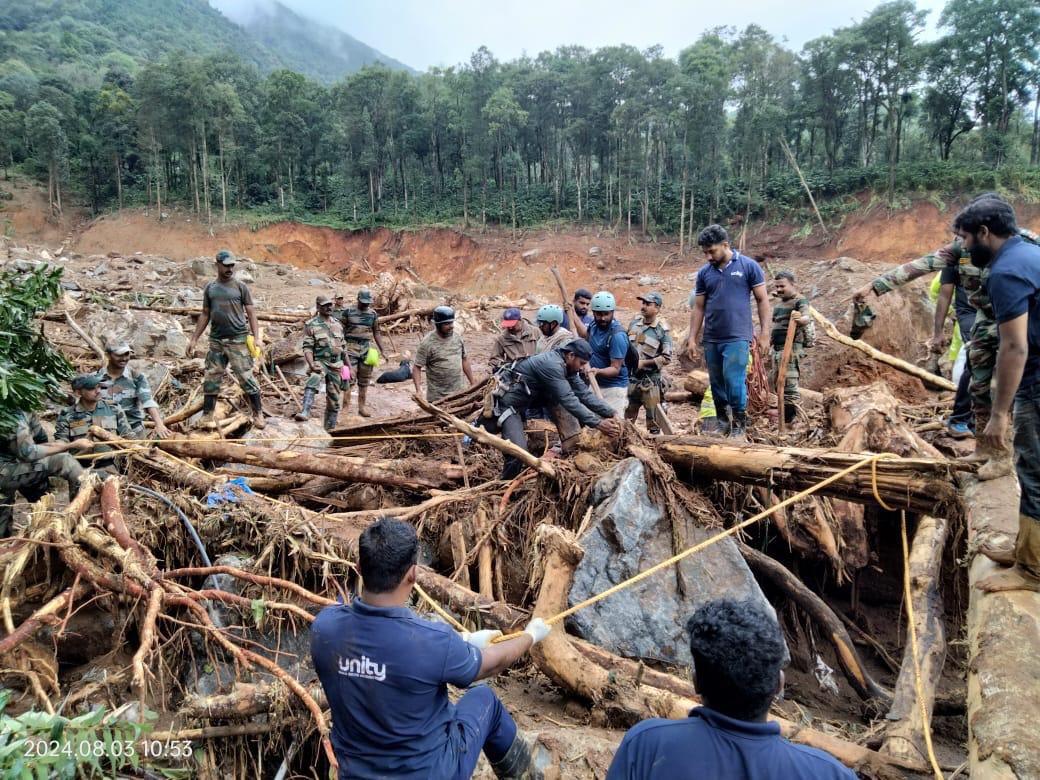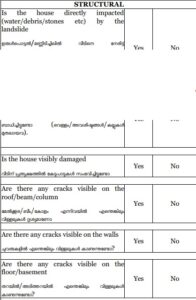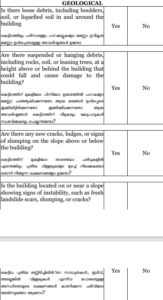Ten specially formed assessment teams are racing against time to determine the fate of buildings in the landslides-hit areas.
Published Aug 09, 2024 | 9:00 AM ⚊ Updated Aug 09, 2024 | 9:00 AM

Rescue volunteers at a landslide-affected area in Wayanad.
The devastating landslides in Wayanad have left hundreds of families staring at uncertainty.
Even as the people are yet to recover from the shock of the disaster, 10 specially formed assessment teams are racing against time to determine the fate of the residences in the landslides-hit areas.
Each team, comprising local officials, geologists, engineers, and health inspectors, is tasked with a daunting mission: To visually inspect every building in the affected area for structural stability.
The assessment process will be guided by a detailed checklist, and the findings will be consolidated into a report on the livability of each building.
This crucial document will be submitted to the Wayanad District Disaster Management Authority (DDMA) for further action.
According to the DDMA the team – comprising one panchayath ward member of the Meppadi Grama Panchayath, a Geologist from the Mining and Geology Department or Ground Water Geology, a Civil Engineer from the Local Self Government Engineering Department, a Health Inspector from the Local Self Government Department and a representative of Tahasildar from Land Revenue Department – has been tasked to carry out rapid visual screening (RVS).
The task, commenced on Wednesday, 7 August, must be completed by 12 August. These teams will conduct the RVS at Kottapadi, Vellarmala, and Thrikaipetta villages in Vythiri Taluk.
The state government on 2 August declared these villages as disaster-affected ones.
In simpler terms, RVS is a quick way of assessing the building’s vulnerability based on visual inspection.
According to the United Nations Human Settlements Programme (UN-Habitat) the RVS procedure uses a methodology based on a sidewalk survey of a building and a data collection form, which the person conducting the survey completes, based on visual observation of the building from the exterior, and if possible, the interior.
At the same time, the National Disaster Management Authority stated that the RVS will ‘determine whether immediate occupancy can be allowed in damaged buildings’. It will also “determine the category of damage towards finalising the financial aid to be offered by governments”.
The DDMA stated that a comprehensive assessment of the affected area is underway.
“The teams constituted for the purpose will be visiting every house and building to conduct RVS of basement, wall, and roof stability, ensuring the structural soundness of each property. Additionally, they are evaluating the debris surrounding the buildings to identify potential threats,” a DDMA official told South First.
For buildings deemed structurally fit, public health conditions are being assessed to ensure safe reoccupation. Moreover, the assessment includes identifying and reporting any buildings or remains that require demolition to ensure community safety and expedite recovery efforts.
It is learnt that the teams are using a checklist provided to them as their guiding document.
The Joint Director of the Local Self Government Department in Wayanad, along with the Executive Engineer of the Local Self Government Engineering Department, will review the reports.
They will then submit a consolidated report on the liveability of each building to the DDMA.
The DDMA Wayanad will then forward a copy of this report to the Kerala State Disaster Management Authority and actions based on the findings of the report will be ordered subsequently.
The checklist is to document the name of the owner of the building or house number or ration card number of the head of the family. It will also document what kind of building whether house/commercial/industry/ office/shop/cattle shed is being assessed.
The checklist has broadly been divided into three: Structural, geological and public health.

Structural checklist
In the structural aspect, observations like whether the house was directly impacted (water/debris/stones, etc.) by the landslide, whether the building is located near to a failed slope, and others will be examined.

Geological checklist
In the geological aspect, the presence of suspended or hanging debris, including rocks, soil, or leaning trees, at a height above or behind the building that could fall and cause damage to the building, whether the building is located on or near a slope show signs of instability, such as fresh landslide scars, slumping, or cracks and others will be examined.
Whereas in the case of public health, observations like whether the building surroundings are contaminated with debris and biological waste, if the house is dirty with debris, and whether has fungus developed on walls and others will be noted.
Talking to South First, Chooralmala ward member Noorudeen CK said that many people have returned to their houses though the RVS had begun on Wednesday.
“In my ward, there are some areas where the landslides were least affected. The people there were asked to shift to relief camps as a precautionary measure. But they were adamant that as their houses are not damaged, they will return to their respective houses,” Noorudeen said.
Meanwhile, Meppadi grama panchayath president K Babu told South First that the panchayat is focusing on shifting people who are currently at relief camps.
“The schools will have to be reopened. Also, some people don’t want to stay at relief camps. They want to return to their houses or their relatives,” he said.
Babu said the panchayat was searching for alternatives. It has decided to pay the rent of houses those in relief camps would take to be near their relatives.
“We believe that if they live close to someone known to them, it may enhance their mental health,” he said.
(Edited by Majnu Babu)
(South First is now on WhatsApp and Telegram)
